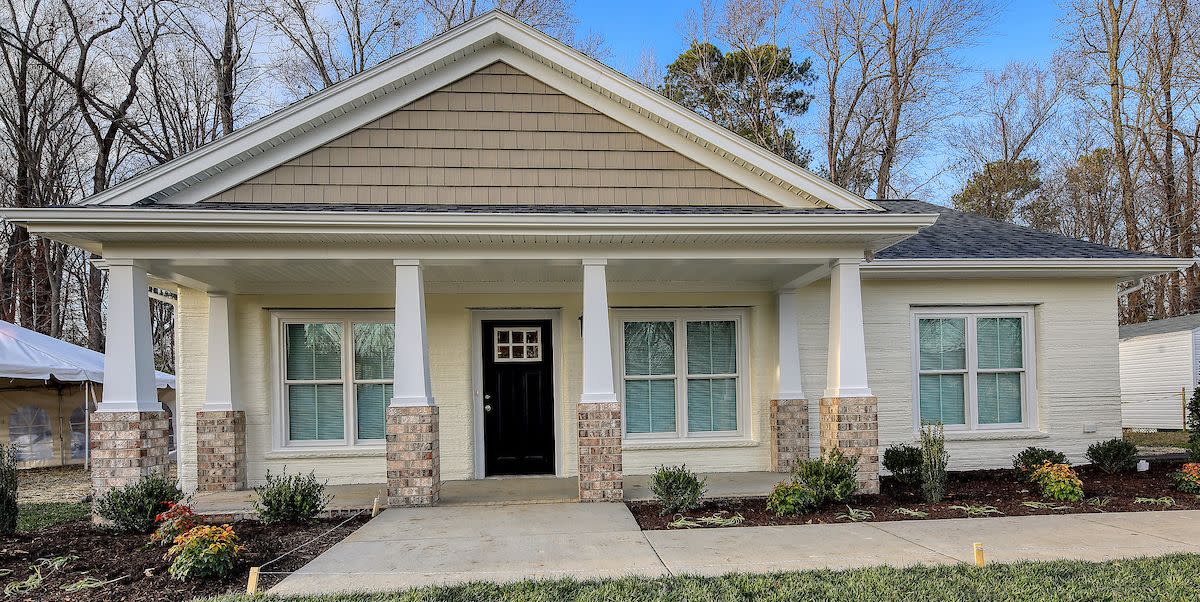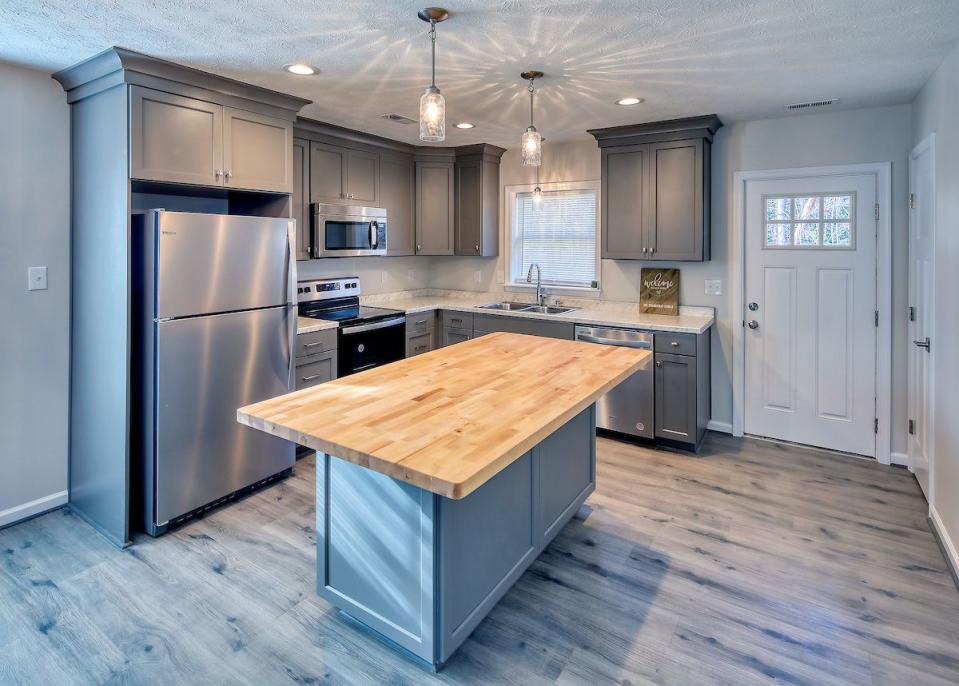Habitat for Humanity Just Unveiled Its First-Ever 3D-Printed Home

While 3D printing has been around since the 1980s, its use in home building is relatively new—and it offers up exciting opportunities to combat homelessness and other housing inequity around the world. It's a potential solution that Habitat for Humanity is exploring with its latest venture: a home in Williamsburg, Virginia, nearly entirely made from 3D printing, or additive manufacturing. Not only does that sound cool, but it potentially opens up new ways for Habitat to serve its mission of providing housing for low-income and disabled residents.
"While this is the first 3D-printed owner-occupied Habitat home in the nation, every Habitat home constructed, renovated or repaired is special because we partner with families with low-to-moderate incomes, veterans, seniors and people with disabilities," Janet V. Green, CEO of Habitat for Humanity Peninsula & Greater Williamsburg, explains. She adds that printing using 3D technology offers a way to bridge the affordable housing gap, as Habitat for Humanity is always searching for "solutions to build more efficient homes."
To bring this project to life, Habitat for Humanity partnered with Alquist, a 3D printing home construction company. And while this may be the first 3D-printed home created by Habitat for Humanity, it is not the last; the organization already has plans underway for another, set for completion in Tempe, Arizona, next month.

As for the actual process behind 3D-printing a home, Alquist—like others experimenting in this field—uses concrete, a medium that can cut building costs by up to 15% per square foot. Concrete is also able to retain temperature better than many other materials, meaning that heating and cooling costs for this abode will be below average, a huge benefit for low-income residents. And in the instance of natural disasters such as tornadoes and hurricanes, having a concrete home is ideal, as it is resistant to damage.

The final product of this home boasts three bedrooms and two full bathrooms in total, across 1,200 square feet. Plus, it's EarthCraft certified, meaning it minimizes environmental impacts and will not cost as much to maintain.
Since its completion, the dwelling was sold to a local resident named April, whose income is less than 80% of the median income in her area. Thanks to Habitat for Humanity's homebuyer program, April's monthly mortgage payments will cost no more than 30% of her income—and that includes both her homeowner's insurance and real estate taxes.
You Might Also Like